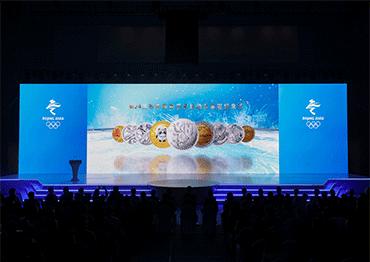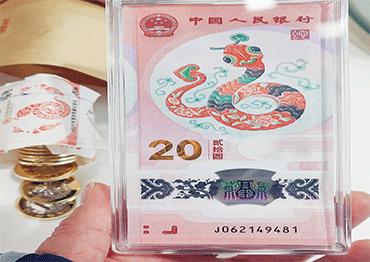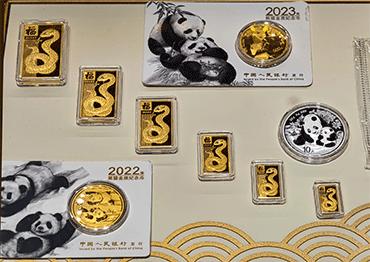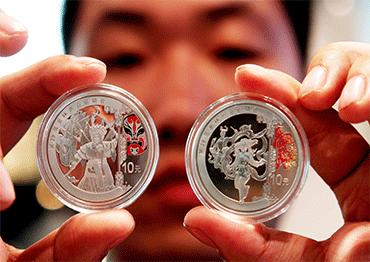new practice for the Lunar New Year, or Spring Festival celebration, an eight-day holiday that concluded at the beginning of February, has become popular in China. Starting in 2003, the People’s Bank of China, the country’s central bank, has issued commemorative coins for each lunar year, typically featuring the year’s zodiac animal and auspicious flowers, plants and patterns that symbolize happiness and blessings. Commemorative coins for 2025, the Year of Snake, were released in November 2024. Made of gold, silver, platinum and copper alloy, they are all legal tender. The bank announced in early January that all 99.99 million copper alloy coins had sold out, although gold and silver coins were still available.
Other commemorative coins are issued for special events and cultural icons, including the 9th Asian Winter Games, held between February 7-14 in China’s northeastern city of Harbin, Heilongjiang Province, known for its annual Ice and Snow Festival. In a recent video of street interviews released by the portal of the central bank’s China Gold Coin Group, several interviewees said they would be happy to receive commemorative panda gold coins for their annual bonus because gold prices are high. The international spot gold price peaked at a record high of more than US$2,800 an ounce on January 30 and has since soared to over US$2,900, pushing gold prices in China to a record high of around 690 yuan (US$96) per gram on the Shanghai Gold Exchange.
Some collectors are interested in commemorative coins not only from China, but from around the world. In August 2024, the China Association of Collectors, along with the China Collections journal, published a book in which the top 100 Chinese coin collectors wrote about their experience. One of them, Guan Baixun, wrote that collecting exquisite commemorative coins from around the world is his lifelong pursuit.
In an interview with China News Service, Guan shared his experiences of collecting coins, and how international and Chinese coin markets differ.
CNS: What is the difference between currency and commemorative coins? What are the features of China’s commemorative coins and those of foreign countries?
Guan Baixun: A currency is a medium of exchange for goods and services, serving as a measure of value. Commemorative coins are legal tender issued by a country to mark significant events, people and places of interest of the country or the world. They are made of ordinary or precious metals.
Ordinary commemorative coins circulate like any coins of the same face value. They are generally made of copper-nickel alloy. Precious metal commemorative coins are generally made of gold, silver and platinum. Their real value is not represented by denomination, but is more decided by the price of the precious metals used to mint the coins and their commemorative purposes. So precious commemorative coins are more often bought and kept for collecting and investment.
Commemorative coins issued by China and foreign countries have unique characteristics. They differ in how they are valued by the market, the cultural icons they symbolize and their investment return.
In terms of monetary value, China’s commemorative coins are influenced by policy and cultural factors. For example, coins based on Chinese zodiac animals are favored for the traditional culture and national feelings they reflect, so they are mostly for collecting. China issues commemorative coins based on themes and demand. Some are scarce, such as precious metal panda design coins.
The value of foreign commemorative coins is more affected by market supply and demand, as well as the coins’ popularity among investors. For example, American Gold Eagle coins [issued by the US Mint] are widely recognized as a good investment for their high gold purity and market recognition.
In terms of cultural difference, China’s commemorative coins have themes of traditional culture, historical events, prominent people and so on, and show elements such as national unity. Commemorative coins issued by the US are mostly themed on their presidents and national parks, while those issued by Japan are mainly themed on traditional culture and natural landscapes.
China’s commemorative coins mostly feature a traditional round shape, which has been used for coins for thousands of years in China. A typical Chinese design features traditional elements that signify blessings, such as dragons, phoenixes and peonies. In the West, commemorative coins come in various shapes. Their patterns are more themed on geography, astronomy, flora and fauna. For example, there is a commemorative coin designed in the shape of the Eiffel Tower, as well as a British Virgin Islands-issued one minted in the shape of Big Ben.
In terms of return on investment, China’s commemorative coin market is relatively stable, especially for ordinary metal commemorative coins, thanks to a mechanism in which banks receive commemorative coins at face value. Commemorative coin markets in other countries are more influenced by factors such as the economic situation and changes in investment trends, so their prices are more volatile. Global gold prices have a big impact on coins containing pure gold.
CNS: Is there any standard for the value of a particular coin for collecting?
GB: The Standard Catalog of World Coins released by US publisher Krause Publications is an authoritative reference for this. The catalog is a must-read for coin enthusiasts and collectors.
The Mint Directors Conference (MDC) Awards and the Coin of the Year Awards (COTY) are two major globally recognized awards to honor the best coin designs. The MDC has more than 40 members [including China], and it is held once every two years in member countries. The COTY was established by World Coin News in 1984 and is presented by Krause Publications annually.
Chinese commemorative coins have won several COTY awards. In 1984, China’s silver “Year of the Dog” 20-yuan coin won the Best Crown Coin award, a year before its silver “Marco Polo” 5-yuan coin claimed the Most Historically Significant Coin award, the gold “Panda” 100-yuan coin won the Best Gold Coin award, and the “Panda and Cub��� 10-yuan silver coin won the Best Silver Coin award. In 1990, the “Year of the Dragon” silver 100-yuan coin took the Best Silver Coin award, so did its “Peacock” silver 150-yuan coin in 1995, and the “Mogao Grottoes” silver 20 yuan silver coin in 2003. Also in 2003, China’s “Panda” 500-yuan gold coin won the Best Gold Coin award, and so did its “Maijishan Grottoes” 2,000-yuan gold coin three years later. In 2018, the “Year of the Monkey” 20-yuan silver coin claimed the award for the Best Circulating Coin. In 2023, the “Auspicious Culture – swans” 20-yuan silver coin took the Best Silver Coin award.
There are aspects where China’s commemorative coins could draw from their counterparts. In terms of the material, award-winning Chinese coins are mostly made of gold and silver, while many of their global counterparts that have claimed awards in recent years are a combination of multiple metals materials, and we can learn from that.
In terms of design, China might need to think outside the box to craft coins with their own features by drawing inspiration from overseas designs, such as Austria’s silver coin series, as well as Niue’s porcelain vase-inlaid and woodinlaid silver coins, Canada’s glow-in-the-dark coins, and the British Indian Ocean Territory’s crystal-inlaid silver coin.
CNS: How is the domestic market for coins issued for major sports events, such as the Olympics?
GB: Sports-themed commemorative coins have always been an attraction. There is large demand in China for such coins. Because people are passionate about sports and a healthy life, such coins are more likely to resonate with collectors. Foreign-issued commemorative coins themed on the Olympic Games as well as other important sports events appeal to Chinese collectors.
Before every Olympic Games, foreign-issued Olympic-themed commemorative coins made of different materials pour in from outside the country. Collection markets in Beijing, Shanghai, Guangzhou and other major cities in China are heaving with collectors hunting for such coins through overseas Chinese residents and students, or online. Olympic-themed coins are so popular that they are often in short supply, so they retain their high prices after the initial issues. The 9th Asian Winter Games in Harbin issued a set of commemorative coins as a key cultural product of the sports event and these were China’s first commemorative coins themed on the Asian Winter Games.
CNS: What’s your advice for people who are interested in coin collecting?
GB: China had a large group of stamp collectors in the 1970s and 1980s, and the number of coin collectors began to grow during the 1980s and 1990s. Going into the 21st century, many stamp collectors turned to coin collecting, which boosted the participation of young people. Nowadays, beginners are well-informed and have easy access to information. My advice for beginners is to first, figure out a reasonable budget, and begin with ordinary metal coins that are easy to start with, such as China’s annually issued Chinese zodiac commemorative coins, or some relatively low-priced ordinary commemorative coins issued by other countries. Keep doing this and go further step by step.
Then, you should consult and learn from veteran collectors based on whether you want them for short-term investing or a long-term collection. For short-term investments, if you expect immediate returns, keep a close watch on market hot spots and price fluctuations. For example, some new issues with popular themes may see price increases in the short term. For long-term collections, focus on factors such as the significance of its theme and its rarity. For example, China’s panda gold and silver commemorative coins series are good options for this.
Keep yourself informed and only buy through legitimate sources and always prioritize official channels. The People’s Bank of China lists information about this. In other countries, there are similar reliable channels to buy official commemorative coins, such as the US Mint’s official website. Choosing legitimate vendors will help you avoid buying fake coins or low-quality commemorative coins for unreasonably high prices.
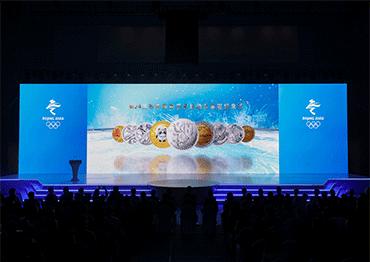
 Old Version
Old Version
